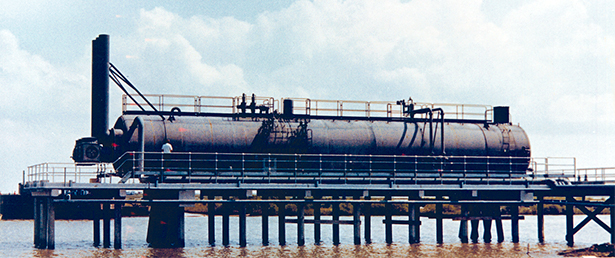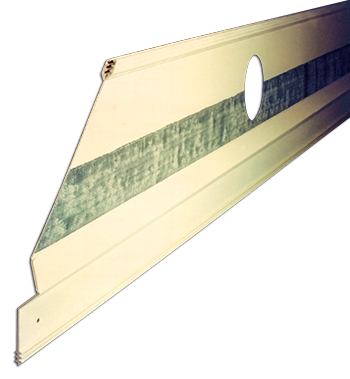Case Study: Fiberglass/Graphite Coalescent Grid Increases Refined Oil Production

 Electrostatic dehydrators (used to separate water and salt from oil in the field and in oil refineries) typically use steel grids to carry current in the operation. NATCO Company of Tulsa, Oklahoma, a pioneer in the development of this technology for the oil industry, has invented a new pultruded grid of vinyl ester resin reinforced with fiberglass and graphite that is far superior to steel grids in its performance in this application.
Electrostatic dehydrators (used to separate water and salt from oil in the field and in oil refineries) typically use steel grids to carry current in the operation. NATCO Company of Tulsa, Oklahoma, a pioneer in the development of this technology for the oil industry, has invented a new pultruded grid of vinyl ester resin reinforced with fiberglass and graphite that is far superior to steel grids in its performance in this application.
Metal grids can only yield a uniform voltage spread across their surfaces, but the combination of fiberglass and graphite creates uneven voltage across the grid which results in the growth of larger water drops than on metal.
| TECHNICAL DATA |
|---|
| Product: Fiberglass/graphite coalescent grid |
| Process: Pultrusion |
| Materials: Fiberglass reinforced vinyl ester and graphite strip |
| Size: 15" high x 11' long, 1/8" thick with 5" graphite strip (full length) |
| For: NATCO Company |
The grid is 15" high x 11' long with a 5" wide graphite strip running the full length of the grid. This design results in a faster separation process and these advantages:
• A substantial increase in salt removal efficiency
• Increased capacity
• Eliminates the need for an internal recycle because of more
complete dehydration
• Cuts down on energy costs
In addition, the fiberglass/graphite coalescent grid has higher corrosion resistance than metal grids in this application.
The electrostatic dehydrator shown here contains 100 or more fiberglass graphite grids to perform the separation process described above.